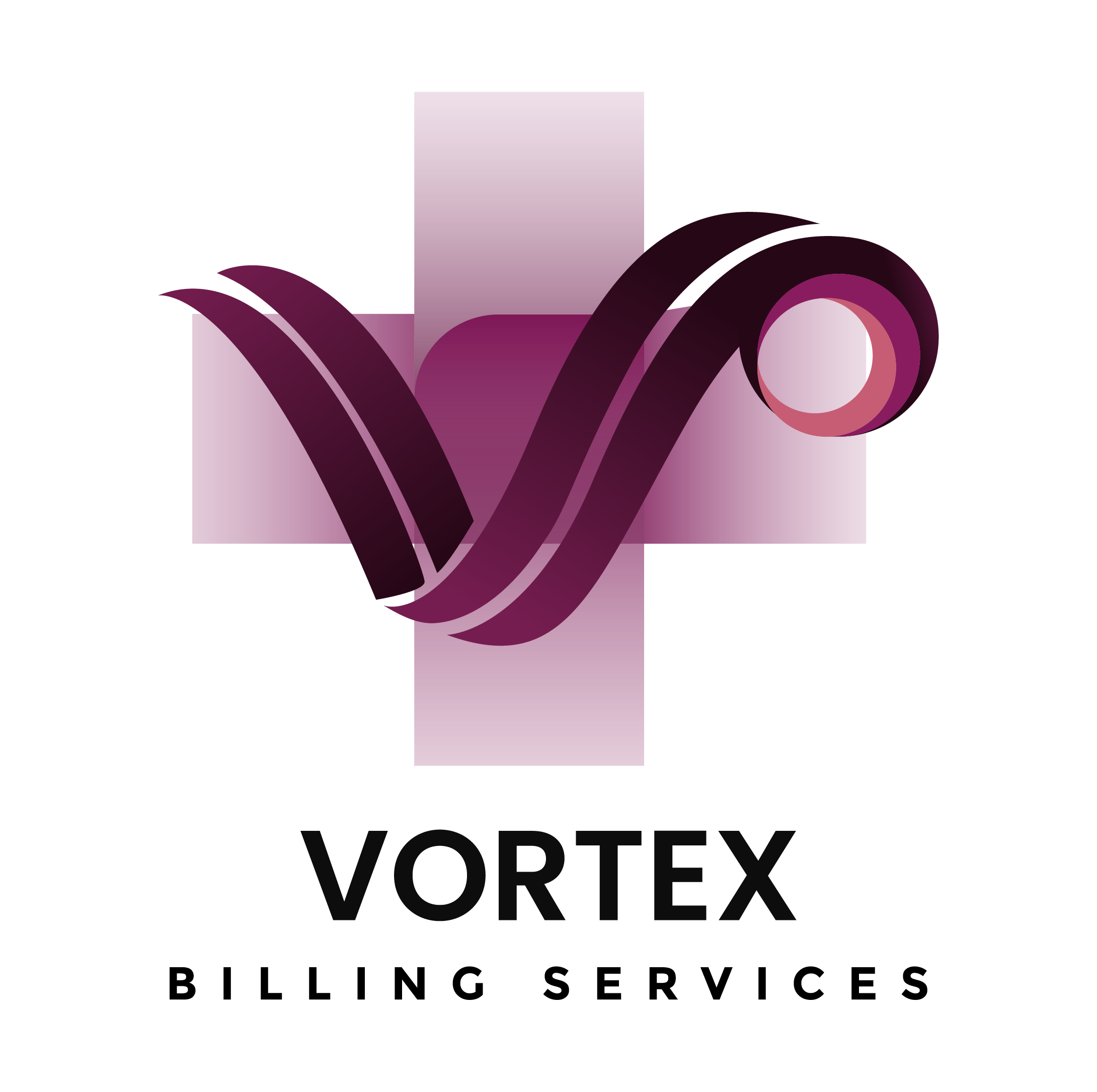The Essential Revenue Cycle KPIs for US Healthcare Practices in 2025
In 2025, every healthcare practice in the USA must focus on tracking specific revenue cycle KPIs to stay competitive, compliant, and financially stable. These key performance indicators (KPIs) are no longer optional—they are essential for survival in a healthcare landscape driven by technology, regulatory compliance, and patient-centered care. So, what exactly are these KPIs, and why are they so important for your healthcare practice? The answer lies in how efficiently you manage your revenue cycle—from patient registration to final payment collection. If you’re not tracking and improving these metrics, you’re leaving money on the table and risking non-compliance. This article breaks down the must-track revenue cycle KPIs every healthcare practice should prioritize in 2025.
Understanding the Role of KPIs in a Healthcare Practice
Why KPIs Matter in 2025 More Than Ever
2025 is not just another year; it’s a turning point for every healthcare practice in the U.S. New regulatory mandates, increasing patient expectations, and widespread adoption of technology mean practices must be more data-driven than ever. Key performance indicators (KPIs) are your compass in this new landscape. They tell you where your practice is excelling and where it’s falling short.
Here’s why KPIs are more critical now than ever:
- Shift to Value-Based Care: Reimbursements are now tied to quality, outcomes, and efficiency. Without tracking the right KPIs, your practice could be penalized.
- Greater Patient Consumerism: Patients are shopping around. They want affordable, transparent, and fast service. KPIs like patient satisfaction and no-show rates help you meet those demands.
- Technology Explosion: EHRs, AI, and RCM platforms are generating a goldmine of data. KPIs help turn that data into action.
- Payer Scrutiny and Audits: Insurers are tightening their scrutiny. If you’re not monitoring compliance-related KPIs, you risk audits and denials.
In short, KPIs give your healthcare practice a real-time performance mirror. You can’t improve what you don’t measure, and in 2025, guesswork just won’t cut it.
How KPIs Help Optimize Revenue Cycle Management
At its core, revenue cycle management (RCM) is about getting paid—efficiently, accurately, and on time. KPIs act like checkpoints along the journey from patient intake to final payment. They highlight where delays or losses are occurring and what corrective actions are needed.
For instance:
- If your Days in A/R is creeping upward, you may have a collections or denial issue.
- A low First Pass Resolution Rate signals problems in your claims submission process.
- A high Patient Collections Rate indicates strong front-desk processes and payment plans.
Imagine trying to steer a ship blindfolded—that’s what running an RCM process without KPIs feels like. These metrics empower your staff to act fast, make data-backed decisions, and fine-tune performance. They also build accountability, allowing managers to measure team efficiency and process effectiveness across every department in your healthcare practice.
Top Financial KPIs to Track
Days in Accounts Receivable (A/R)
This is one of the most fundamental KPIs for any healthcare practice. It tells you the average number of days it takes to collect payment after a service has been rendered.
- Ideal Range: 30 to 40 days
- Red Flag: Over 50 days signals a serious cash flow problem
Why it matters: Long A/R days mean your practice is not collecting money efficiently. This could be due to claim denials, billing errors, or slow payer responses.
How to improve it:
- Identify slow-paying payers
- Automate follow-ups
- Submit clean claims the first time
- Train staff to verify insurance upfront
In 2025, a tech-forward healthcare practice will leverage RCM platforms that automatically flag aging A/R, trigger follow-up actions, and forecast potential write-offs before they hit your bottom line.
Net Collection Rate (NCR)
This measures how much of the collectible revenue your practice actually collects. It’s a true reflection of your revenue cycle health.
- Ideal Benchmark: 95% or higher
- Formula: (Payments – Refunds) / (Charges – Contractual Adjustments)
If your NCR is under 90%, your healthcare practice is essentially losing money—often due to preventable issues like poor follow-ups or lack of staff training.
Boost it by:
- Addressing denied claims immediately
- Avoiding under-coding or over-coding
- Training billing teams on payer-specific rules
- Using real-time dashboards to catch underpayments
In an era of razor-thin margins, NCR tells you whether your practice is maximizing its revenue potential or leaving money behind.
Gross Collection Rate (GCR)
This shows how much your practice is collecting against the total charges billed before any adjustments.
- Healthy Range: 60%–85% (depends on specialty and payer mix)
- Formula: Total Payments / Total Charges
Unlike NCR, this doesn’t account for contracted rate reductions, so it’s more of a high-level indicator. But it’s useful for spotting systemic issues in your pricing, coding, or billing.
For example, a plummeting GCR could indicate:
- Under-billing for services
- High write-offs or bad debts
- Inadequate payer contract negotiation
Every healthcare practice aiming for sustainable growth in 2025 must keep a sharp eye on GCR trends, especially when negotiating payer contracts or considering outsourcing billing services.
Operational KPIs Every Healthcare Practice Needs
First Pass Resolution Rate (FPRR)
FPRR measures the percentage of claims that get paid on the first submission—without rework, resubmission, or appeal.
- Target Benchmark: 90% or higher
- Why it matters: Rejected or denied claims delay revenue and increase administrative costs
A high FPRR means your front-end processes are tight—correct patient info, insurance verification, and accurate coding. A low FPRR? That’s a warning sign.
To improve it:
- Use automated coding tools
- Invest in real-time claim scrubbing
- Train staff on documentation standards
In 2025, RCM software with AI-powered scrubbing will be a game-changer for every healthcare practice looking to boost FPRR and slash their denial rate.
Denial Rate and Clean Claim Rate
The Denial Rate tells you how many of your claims are being denied by payers, while the Clean Claim Rate shows what percentage of claims are accepted without needing corrections. These two KPIs are tightly connected—and together, they define how well your healthcare practice is managing its revenue flow.
- Ideal Denial Rate: Below 5%
- Ideal Clean Claim Rate: Above 90%
High denial rates slow down your revenue cycle, increase staff workload, and can result in lost revenue if denials are not appealed on time. On the flip side, a high clean claim rate indicates your claims are accurate and complete when submitted—saving you time and money.
Common causes of claim denials:
- Inaccurate patient information
- Lack of prior authorization
- Medical coding errors
- Duplicate claims
- Expired insurance
Strategies to improve these KPIs:
- Regular training for billing and coding staff
- Use automated tools for eligibility verification
- Implement denial management systems
- Analyze denial trends to catch recurring issues
Tracking these KPIs not only reduces payment delays but also strengthens your relationship with payers. A healthcare practice with consistent clean claim rates is viewed more favorably by insurers—leading to smoother reimbursements.
Patient Collections Rate
In 2025, patient financial responsibility is rising fast due to high-deductible health plans. That means your healthcare practice must get better at collecting payments directly from patients. Enter the Patient Collections Rate—a KPI that measures how much of your patient responsibility you’re actually collecting.
- Ideal Benchmark: 70% or more
- Formula: Collected Patient Payments / Total Patient Responsibility
Why this KPI matters:
- It directly impacts your cash flow
- Reflects front-desk efficiency
- Indicates how well your practice communicates with patients
Low patient collection rates usually stem from unclear communication, poor payment options, or lack of proactive collection processes.
Tips to improve patient collections:
- Offer digital payment portals
- Provide cost estimates before appointments
- Send automated payment reminders
- Educate staff to discuss payments upfront
A tech-savvy healthcare practice in the U.S. can no longer afford to treat patient payments as an afterthought. In 2025, it’s essential to build a retail-like financial experience that’s fast, transparent, and easy for patients.
Compliance and Accuracy KPIs
Coding Accuracy Rate
Every claim that goes out from your healthcare practice carries one massive risk: coding errors. That’s why your Coding Accuracy Rate is a vital KPI in 2025. It reflects how precisely your coders translate clinical documentation into billable codes.
- Benchmark: 95%+ accuracy
- What it impacts: Claim approvals, audit risk, compliance, and reimbursement levels
Incorrect or inconsistent coding is a red flag for payers—and can lead to penalties, denied claims, or audits. Worse, it puts your practice at risk of violating HIPAA or CMS regulations.
Ways to improve coding accuracy:
- Invest in ongoing coder education (especially on ICD-11 and CPT updates)
- Use AI-driven coding assistants
- Conduct regular internal and external coding audits
- Encourage detailed physician documentation
For a healthcare practice to thrive in the age of compliance and automation, coding accuracy is not optional—it’s non-negotiable.
Charge Lag Days
Charge lag measures the time between when a service is provided and when it’s entered into your billing system. The longer the lag, the more cash flow is delayed—and the higher the risk of forgotten or missed charges.
- Target Lag: Less than 3 days
- Problem Zone: More than 5 days
A large charge lag can signal staffing issues, poor communication between clinicians and billers, or outdated systems.
To reduce charge lag:
- Use mobile charge capture tools
- Automate charge entry from EHR to billing software
- Create daily reporting to catch delays
- Train providers on real-time documentation practices
By tracking this KPI closely, your healthcare practice can ensure no services go unbilled, and payments flow more consistently.
Audit and Compliance Scores
With increased scrutiny from CMS, commercial payers, and government watchdogs, your healthcare practice must take compliance seriously. One of the most important KPIs here is your Audit Score or Compliance Score—metrics derived from internal or third-party audits.
These scores evaluate:
- Documentation completeness
- Coding and billing accuracy
- HIPAA compliance
- Adherence to payer-specific guidelines
A high audit score not only protects you from penalties but also signals operational excellence to insurers and partners. It can even impact payer contracts or accreditations.
To maintain high compliance scores:
- Perform regular audits (monthly or quarterly)
- Use checklists for documentation review
- Provide feedback and retraining to staff
- Work with RCM vendors that offer built-in compliance checks
In 2025, compliance is no longer just the responsibility of the billing department—it’s a strategic KPI that every healthcare practice must monitor closely.
Patient Experience KPIs
Patient Satisfaction Score
Patient satisfaction is directly tied to your practice’s reputation, retention rate, and even reimbursement in some value-based care models. This KPI is often tracked through surveys like CAHPS (Consumer Assessment of Healthcare Providers and Systems) or internal feedback tools.
- Target Benchmark: 85%+ satisfaction
- Survey Elements: Wait time, communication, billing clarity, appointment scheduling
A poor satisfaction score doesn’t just lose you patients—it invites negative online reviews, which are powerful enough to affect new patient acquisition.
How to boost satisfaction:
- Streamline the front-office experience
- Provide multiple appointment booking options (online, app, phone)
- Ensure staff are empathetic and informed
- Make billing and insurance processes transparent
By integrating this KPI into your overall strategy, your healthcare practice can ensure clinical excellence is matched with customer service.
Appointment No-Show Rate
No-shows kill revenue and disrupt workflow. This KPI tracks the percentage of patients who miss scheduled appointments without prior cancellation.
- Healthy Benchmark: Under 5%
- Real Impact: Lost revenue, wasted staff time, lower patient outcomes
No-show rates are higher in underserved or younger populations, so tracking this KPI helps practices identify patterns and intervene accordingly.
To reduce no-shows:
- Send SMS/email reminders
- Use two-way confirmation systems
- Offer telehealth alternatives for convenience
- Impose and enforce missed appointment policies
Every missed appointment is a lost billing opportunity. In 2025, any healthcare practice aiming for profitability must minimize no-show rates using tech-based communication and patient engagement strategies.
Average Wait Time and Turnaround
Your wait time isn’t just an inconvenience—it’s a KPI that impacts patient satisfaction, appointment efficiency, and operational flow.
- Goal: Under 15 minutes for check-in to provider contact
- Extended Metric: Total visit turnaround time
Long waits can drive patients to competitors, overload your staff, and signal deeper inefficiencies in scheduling or workflow.
Strategies to improve this KPI:
- Use real-time queue tracking software
- Allow online check-ins and digital paperwork
- Stagger appointments more effectively
- Review provider schedules weekly
In a patient-centric landscape, your healthcare practice can’t afford to ignore how long patients wait. Reducing wait times improves not just satisfaction—but retention, referrals, and reimbursement.
Technology and Automation KPIs
EHR Integration Effectiveness
Electronic Health Records (EHRs) are the digital backbone of every modern healthcare practice—but if they’re not well-integrated into your revenue cycle, they can become more of a burden than a benefit. That’s why EHR Integration Effectiveness is a critical KPI in 2025.
This KPI evaluates how seamlessly your EHR communicates with billing software, appointment systems, and patient portals. Poor integration leads to manual errors, delays, and data silos.
Indicators of strong EHR integration:
- Real-time syncing of clinical notes to billing
- Automated coding suggestions from EHR entries
- Accurate transfer of patient demographics
- Instant insurance eligibility verification
Ways to improve EHR integration:
- Choose an interoperable EHR system
- Use middleware or APIs to connect platforms
- Regularly test data flows between systems
- Train staff to fully utilize integrated features
In a tech-driven healthcare environment, your healthcare practice needs a unified digital infrastructure to reduce errors and maximize productivity. EHR integration isn’t just an IT concern—it’s a revenue cycle essential.
Automation Utilization Rate
This KPI measures how much of your RCM process is handled by automation rather than manual intervention. In 2025, high-performing healthcare practices are replacing redundant tasks with intelligent automation.
Key areas to automate:
- Insurance eligibility checks
- Claim scrubbing and submission
- Patient billing reminders
- Payment posting and reconciliation
Target Utilization Rate: 60%–80% of RCM tasks
Higher automation not only reduces labor costs but also cuts down on human error, speeds up reimbursements, and frees staff for more strategic work.
To increase this rate:
- Invest in AI-driven RCM platforms
- Analyze workflow to identify automation gaps
- Set automation goals for departments
- Continuously monitor for accuracy and efficiency
A healthcare practice that embraces automation can drastically improve KPI performance while reducing burnout among billing and administrative teams.
Claim Submission Timeliness
This KPI tracks how quickly your healthcare practice submits claims after services are rendered. Delayed submissions not only slow down cash flow but can also result in denials due to payer deadlines.
- Benchmark: Within 48 hours of service
- Best Practice: Same-day or next-day submissions
Common causes of delay:
- Missing documentation
- Backlogs in charge entry
- Inefficient billing workflows
To improve submission timeliness:
- Set internal deadlines tighter than payer timelines
- Automate claim generation
- Monitor submission logs daily
- Ensure clinical documentation is completed immediately
A fast, accurate claim process keeps your revenue cycle tight and reduces the risk of denials. In 2025, speed and precision are non-negotiables for any healthcare practice serious about sustainability.
Building a KPI Dashboard for Your Healthcare Practice
Choosing the Right Metrics
Not every KPI is relevant to every practice. The key to building an effective KPI dashboard is choosing the metrics that directly align with your goals, specialty, and challenges.
For example:
- A primary care clinic might focus on patient wait times and no-show rates.
- A surgical center may prioritize charge lag and coding accuracy.
- A behavioral health practice could track patient satisfaction and collections.
Steps to define your KPI set:
- Identify key pain points (denials, low collections, compliance risks)
- Determine what success looks like (faster payments, better satisfaction)
- Select 10–15 core KPIs to track weekly/monthly
- Assign owners to each metric
A well-designed dashboard puts your entire healthcare practice on the same page—helping everyone from front-desk staff to executives monitor performance and take action.
Real-Time vs. Historical Data Tracking
It’s not enough to just look at monthly reports. In 2025, real-time data tracking is essential for proactive revenue cycle management.
Real-Time Tracking Benefits:
- Immediate alerts on denials or lagging claims
- Early identification of cash flow problems
- Better daily decision-making for staff
Historical Tracking Benefits:
- Benchmarking trends over time
- Budgeting and forecasting
- Identifying seasonal performance patterns
Your healthcare practice should combine both for a complete view. Cloud-based RCM platforms now offer customizable dashboards that show KPIs in real time, while also archiving data for long-term insights.
The ability to view what’s happening now—and compare it to what’s happened before—is a game-changer for smart decision-making in a tech-forward healthcare practice.
Challenges in KPI Tracking and How to Overcome Them
Data Silos and Integration Issues
One of the biggest barriers to effective KPI tracking is data silos—when information is trapped in different systems that don’t communicate.
For example, if your billing team uses one platform, your front office another, and your EHR yet another, it becomes almost impossible to see a clear picture of your performance.
To overcome data silos:
- Use integrated practice management systems
- Implement data warehousing tools
- Work with vendors that offer open APIs
- Standardize data entry protocols
Your healthcare practice can’t afford blind spots in 2025. Bridging these silos with smart integrations creates a connected, transparent ecosystem where KPIs actually mean something.
Staff Resistance to Metrics
Some teams see KPIs as punitive or micromanaging. This mindset can sabotage your entire RCM improvement effort.
Reasons staff resist metrics:
- Fear of accountability
- Lack of understanding
- Poor communication from leadership
How to address resistance:
- Involve staff in KPI selection and dashboard design
- Tie metrics to improvement, not punishment
- Celebrate wins and improvements
- Offer training on why KPIs matter
When your team understands that KPIs aren’t about blame—but about improvement—they’re more likely to buy in. For a healthcare practice to grow in 2025, data-driven culture is just as important as the data itself.
Partnering with RCM Services for Better KPI Results
Benefits of Outsourcing to Tech-Driven RCM Providers
Managing the full scope of your revenue cycle in-house can be overwhelming, especially when trying to maintain accuracy, efficiency, and compliance across the board. That’s why many healthcare practices in the USA are partnering with outsourced, technology-driven Revenue Cycle Management (RCM) service providers.
These companies specialize in handling billing, coding, compliance monitoring, and KPI tracking—allowing you to focus on patient care. But they’re not just offloading tasks; modern RCM partners bring automation, analytics, and expertise that are hard to build internally.
Top benefits include:
- Access to advanced tech without the upfront investment
- Improved KPI performance thanks to experienced teams
- 24/7 tracking and reporting with real-time dashboards
- Compliance management with proactive audits and documentation support
- Scalability for growing or multi-location practices
Outsourcing RCM can significantly enhance your healthcare practice’s financial health, especially if you’re struggling with high denial rates, low patient collections, or outdated technology.
Ensuring Transparency and Compliance
One common concern when outsourcing RCM is the fear of losing control or visibility. The best RCM partners solve this with full transparency—giving you access to live dashboards, KPI scorecards, and regular performance reviews.
Here’s what to look for in a transparent RCM partner:
- Clear reporting structures and agreed-upon KPIs
- HIPAA-compliant platforms with role-based access
- Regular review meetings and compliance audits
- Data ownership clauses in your contract
A reputable RCM provider will act as an extension of your team, not just a vendor. For a compliance-focused healthcare practice, this is a critical relationship. It lets you stay audit-ready and profitable—without sacrificing insight or control.
Future Trends in Revenue Cycle KPIs
AI and Predictive Analytics
Artificial intelligence is no longer science fiction in healthcare—it’s changing the way healthcare practices manage their revenue cycles. Predictive analytics now play a major role in optimizing KPIs by forecasting denials, predicting cash flow gaps, and identifying high-risk claims before they’re submitted.
Emerging AI-driven capabilities:
- Real-time denial prediction
- Patient payment probability scoring
- Intelligent coding suggestions
- Automated documentation reviews
As AI adoption continues to rise, your practice will gain the ability to prevent problems rather than react to them. These tools offer unprecedented precision, helping you hit performance goals faster and more reliably.
In 2025 and beyond, AI will be one of the most powerful allies for healthcare practices committed to data-driven success.
Patient-Centric Metrics
Revenue cycles are no longer just about collecting payments—they’re also about creating a smooth, engaging, and respectful experience for patients. As a result, patient-centered KPIs are becoming a core part of performance tracking.
Examples of patient-focused KPIs:
- Billing clarity score (from patient surveys)
- Patient wait time and satisfaction trends
- Payment plan utilization rate
- Portal usage and payment completion rate
These metrics show how your healthcare practice is perceived by patients—not just insurers. And in an era where online reviews and consumer loyalty drive growth, tracking them is a smart move.
The most successful practices in the future will be the ones that balance operational KPIs with human-centered care experiences.
Conclusion
Tracking the right revenue cycle KPIs in 2025 isn’t just a smart strategy—it’s a necessity for every healthcare practice aiming to stay profitable, compliant, and patient-focused. From financial indicators like Days in A/R and Net Collection Rate to operational benchmarks like Denial Rate and FPRR, each metric offers a window into how efficiently and effectively your practice runs.
As technology and patient expectations continue to evolve, so too must your approach to revenue cycle management. Whether you’re optimizing internal workflows or partnering with a tech-driven RCM provider, the key is consistency, accuracy, and full visibility across the board.
Ultimately, data doesn’t lie. By tracking, analyzing, and acting on your KPIs regularly, your healthcare practice can reduce revenue leakage, improve patient satisfaction, and build a future-ready organization prepared to thrive in the modern healthcare marketplace.
FAQs
1. What are the most important KPIs for a small healthcare practice?
Small practices should focus on KPIs that directly affect cash flow and operational efficiency—like Days in A/R, Net Collection Rate, First Pass Resolution Rate, and Patient Collections Rate. These core indicators ensure you’re collecting revenue quickly and reducing unnecessary rework.
2. How often should a healthcare practice review revenue cycle KPIs?
At a minimum, you should review core KPIs monthly. However, high-performing practices track many KPIs weekly—or even daily—using real-time dashboards. Frequent tracking helps catch issues early and make timely improvements.
3. What tools help track KPIs in a healthcare setting?
Practice management software, EHR platforms, and revenue cycle management tools often have built-in KPI dashboards. Cloud-based RCM systems with analytics modules, like Kareo, AdvancedMD, or athenaCollector, are especially helpful for real-time tracking.
4. Can KPI tracking improve patient satisfaction?
Absolutely. Metrics like Appointment No-Show Rate, Average Wait Time, and Patient Satisfaction Score directly reflect the patient experience. By optimizing these KPIs, you can improve service quality, patient loyalty, and online reputation.
5. How do outsourced billing services impact KPI performance?
Quality RCM partners use advanced tech and expert staff to improve KPIs across the board—faster collections, lower denial rates, better compliance, and enhanced reporting. They allow your practice to scale operations without sacrificing accuracy or visibility.



